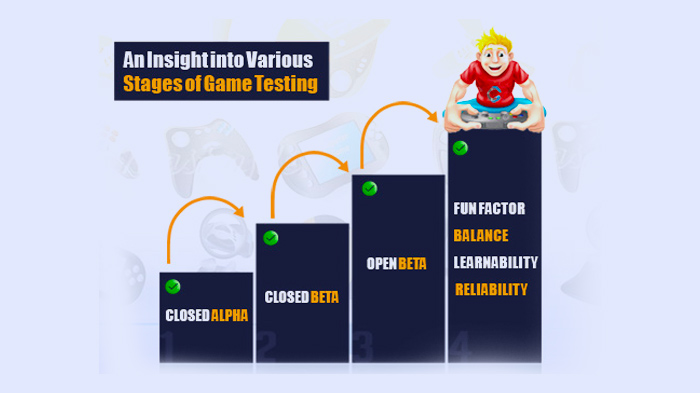
One can’t talk about game compatibility testing without highlighting the need for the detailed process that subjugates a game through various stages of testing before the mentioned game makes its way to the end users. Even if the last two years saw a surge in the game publishers interest in live user testing, with development firms throwing their weights behind live testing as the most preferred methodology – game testing services still run on a set of mundane but essential steps that one can’t ignore yet.
What are these stages of tests? How do the game developers and user community benefit from it?
Here in this article, we shall try to look at some of these important points.
Closed Alpha:
This is one of the preliminary game testing stages and is carried out by a team of users to find bugs that may not have been spotted during development and other initial tests.
The primary purpose of Closed Alpha testing is to refine the software product by finding and fixing bugs that were not discovered earlier (during the development process).
This test is performed exclusively by the game testers where they simulate real user environment by performing all the steps that the actual users might perform.
Closed Beta:
The Closed Beta stage is quite the same as the Closed Alpha testing with the only difference that it’s much more extensive. This test is also open to users (primarily gamers) who may want to try out a game title and participate in the testing process by pointing out bugs that hinder the natural game-play. This phase is important, given the fact that the handful of testers involved in Alpha testing may not be able to discover all the bugs. The number of people involved in Closed Beta testing can be hundreds or even thousands on occasion. The bugs identified are resolved before it goes to the next stage of testing.
Usually the Closed Alpha and Closed Beta involves a limited number of testers by sending invitations to specific individuals.
Open Beta:
Termed as the pre-release stage of the game, it is open to all users who want to try their hands at the game. Since most of the bugs are taken care of in the previous stages (though bugs identified are still welcome), it is aimed at enhancing the user experience. Based on the feedback received from the user’s new features, functionalities may be added to the game.
Some smaller tests contribute to the success of live user testing, and these are –
- ‘Fun Factor’ Test – Developers might consider something funny/interesting and engaging, but the same could be perceived very differently by users. This test helps understanding how users ‘receive’ the game.
- Balance Test – The step involves monitoring components such as the usage, functionally or difficulty level in the game. This step engages tonnes of data.
- Learnability Test – This intends to find answers to the questions like ‘is the game user-friendly’, ‘are users finding it difficult to learn the game’ etc. Game testers can gather quality feedback via this test.
- Reliability Test – This step checks the factor of the reliability of a game – when the same is put under maximum stress resulting out of a large count of users engaged at a particular point in time. Useful for online, server-based games.
A video/computer game development is an endeavour that requires skill and an excellent marketing plan to ensure the success of the title. Proper testing is just the platform on which the future of the title rests.
Article by,
Laxmikant B. Thipse
Founder & CEO
GameCloud Technologies Pvt Ltd
